The office cubicle is dead.
Boring big box stores? Steadily moving toward extinction.
The old rules of commercial interiors may have been an accidental casualty of the pandemic, but we say good riddance.
Expectations for corporate, hospitality, and retail environments are always evolving and brands must adapt to stay relevant to audience expectations. Predictable, cookie-cutter offices and shopping experiences are inadequate to meet the demands of today’s employees and customers. They want to be dazzled. From sleek office spaces that fuel productivity to stunning retail stores that entice customers, the commercial interior landscape is evolving, perhaps faster than ever before.
In this article, we'll take you on a journey through the new rules of commercial interiors, exploring how they reshape how we work, shop, and interact.

Modern Commercial Interiors: The New Normal
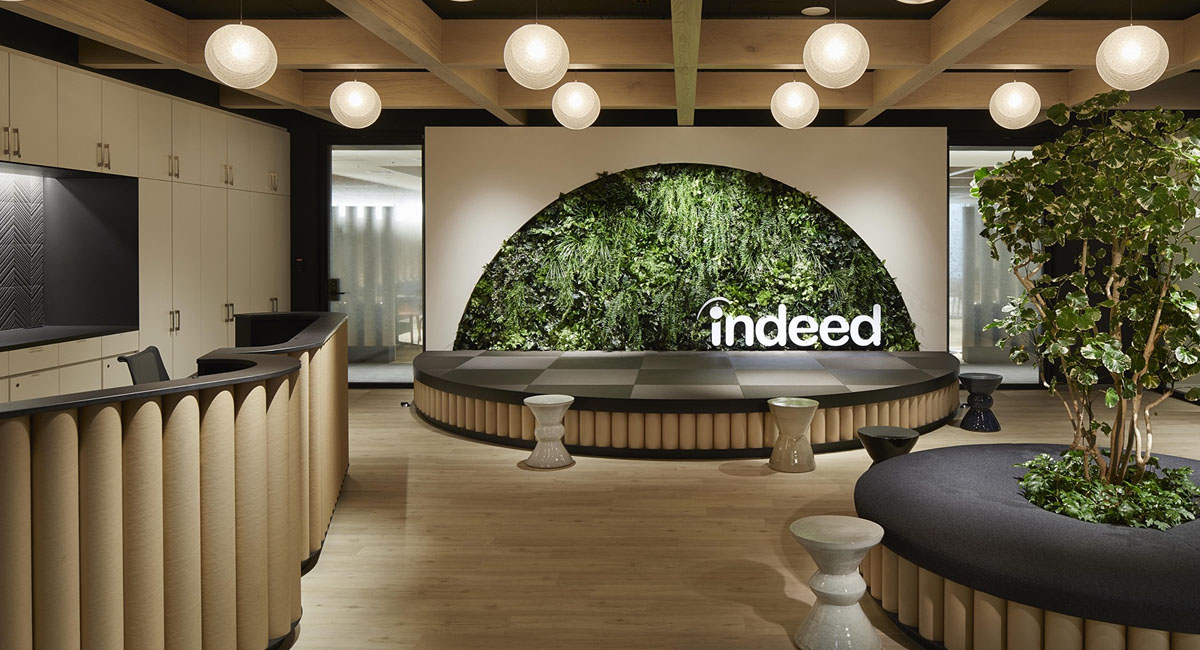
Photo: Indeed’s Tokyo Office
Biophilic Design
Biophilia means “love of life” and in commercial interiors that translates to a love and appreciation for the natural world. This trend toward bringing the outside in involves incorporating sunlight, natural materials, an abundance of plants and water elements, and organic shapes and textures into the design. Color palettes tend to be muted with a lot of neutrals, similar to what would be found in nature. This design approach has health and productivity benefits for employees since living plants purify and pump oxygen into the air.
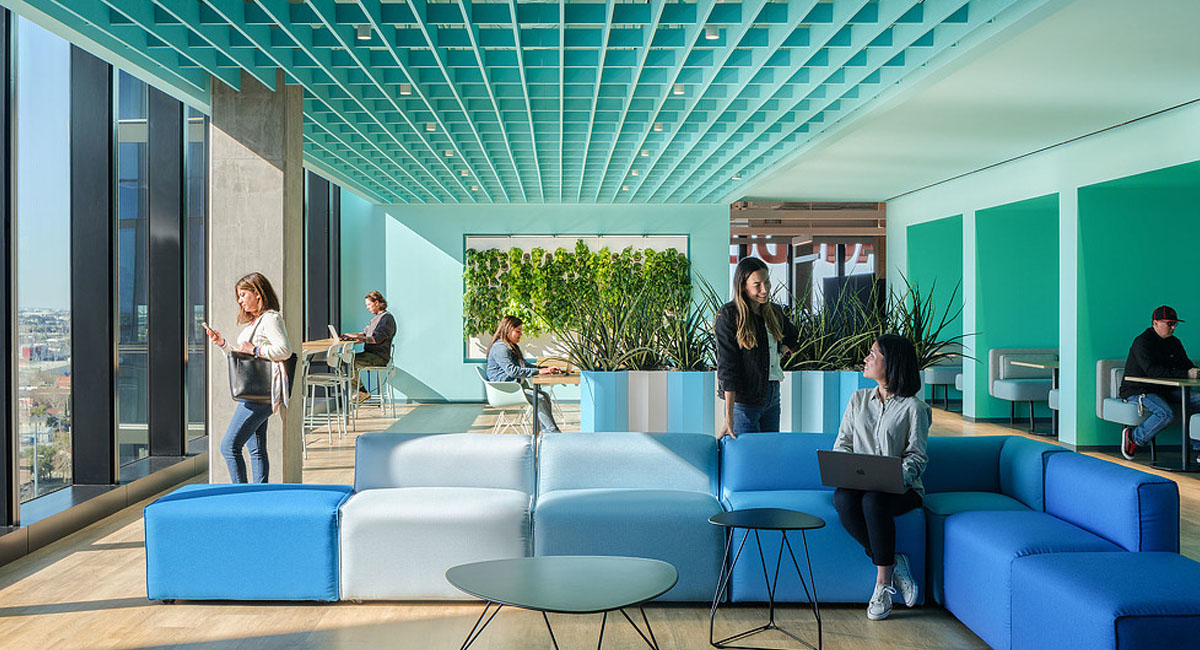
Photo: Adobe Founder’s Tower, San Jose, CA
Flexible, Modular Spaces
Open floor plans. Modular seating. Room dividers. Furniture that can be easily reconfigured and rearranged. In both corporate offices and retail interiors, spaces that are built to shift and change with the needs of the moment are both highly desirable and immensely practical. With a nod toward being more environmentally conscious, spaces that can adapt to changing conditions and the shifting needs of customers and employees give brands more flexibility and more longevity in their designs.
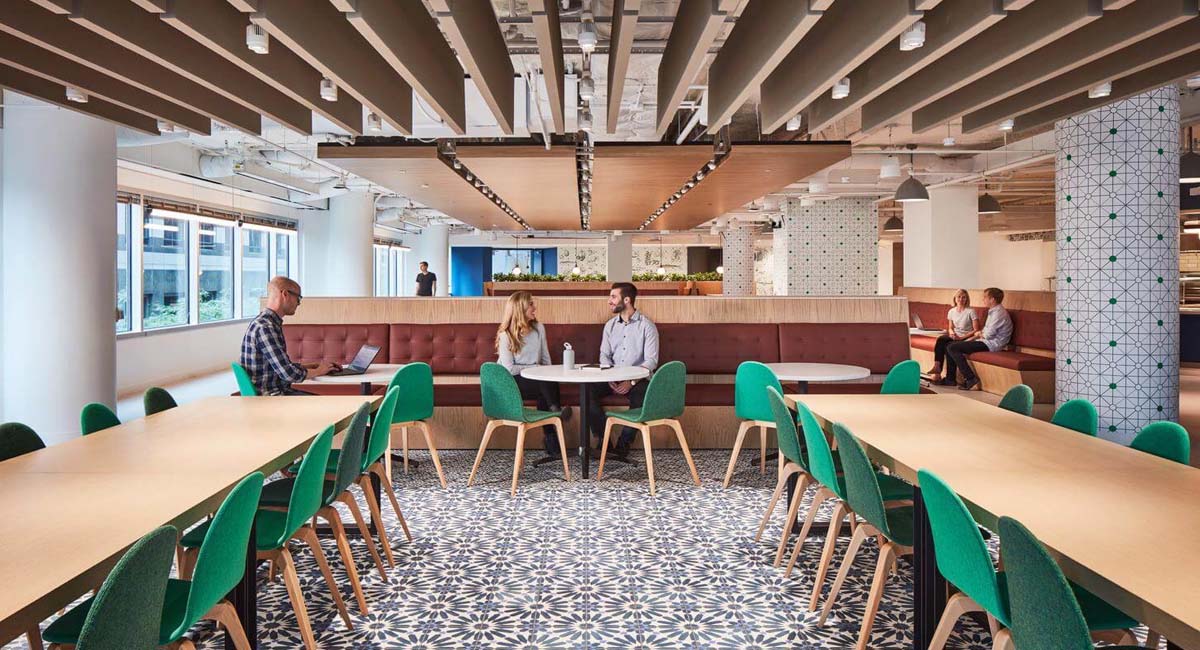
Photo: LinkedIn Chicago
Functionality reigns
There is no question that the way we work has evolved drastically in the last few years. Remote and hybrid work has become the norm rather than the exception and this newfound portability of work has changed what modern employees need from offices. A dedicated office space of one’s own is less important now than having a multitude of environments suited to a variety of tasks. Technology must be integrated and everpresent, collaboration and gathering spaces abundant, and areas for deeply focused work, essential. Commercial interiors must be tailored to meet the needs of today’s workplace, which means digital fabrication and customization are in high demand.
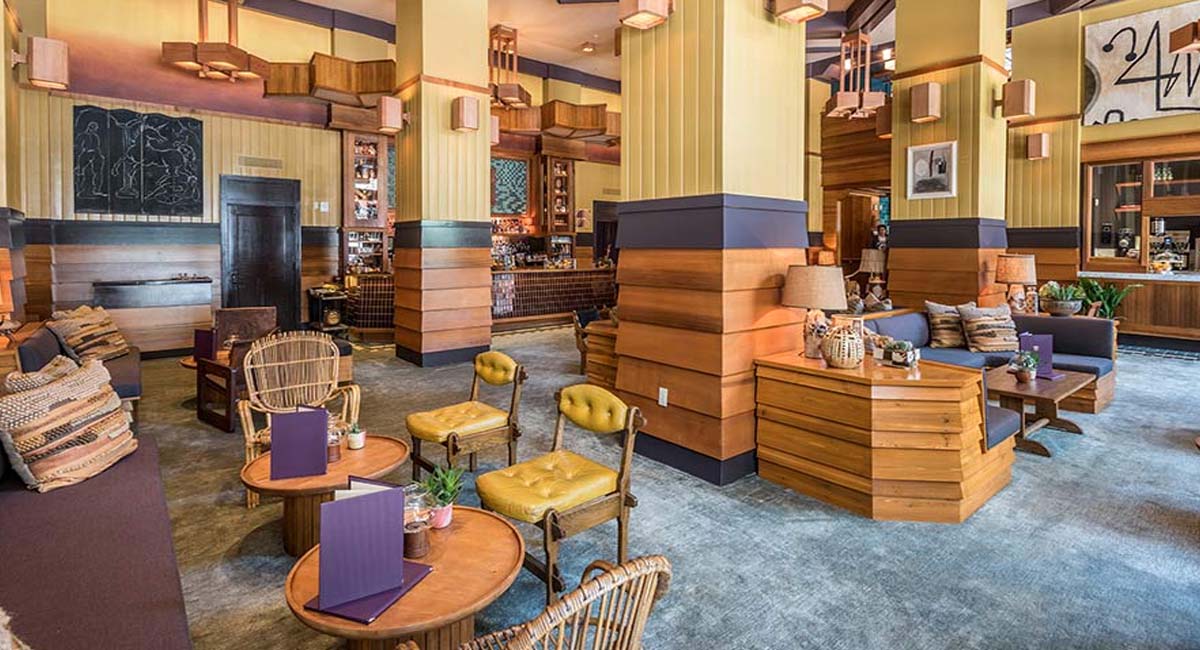
Photo: Freehand LA
Blended environments
Single-duty environments are so 2015. As work-from-home becomes work-from-anywhere, cafes, hotels, and even retail stores are incorporating areas for remote work. Comfy seating, free wifi, floor outlets, great lighting, and access to refreshments are some of the hallmarks of these blended environments. Hotel lobbies, like the Los Angeles outpost of Freehand (above), welcome both guests and local digital nomads looking for a stylish environment to have a cup of coffee or a cocktail and get some work done. These little touches build brand loyalty and acknowledge today’s reality that work travels with us, sometimes whether we like it or not!
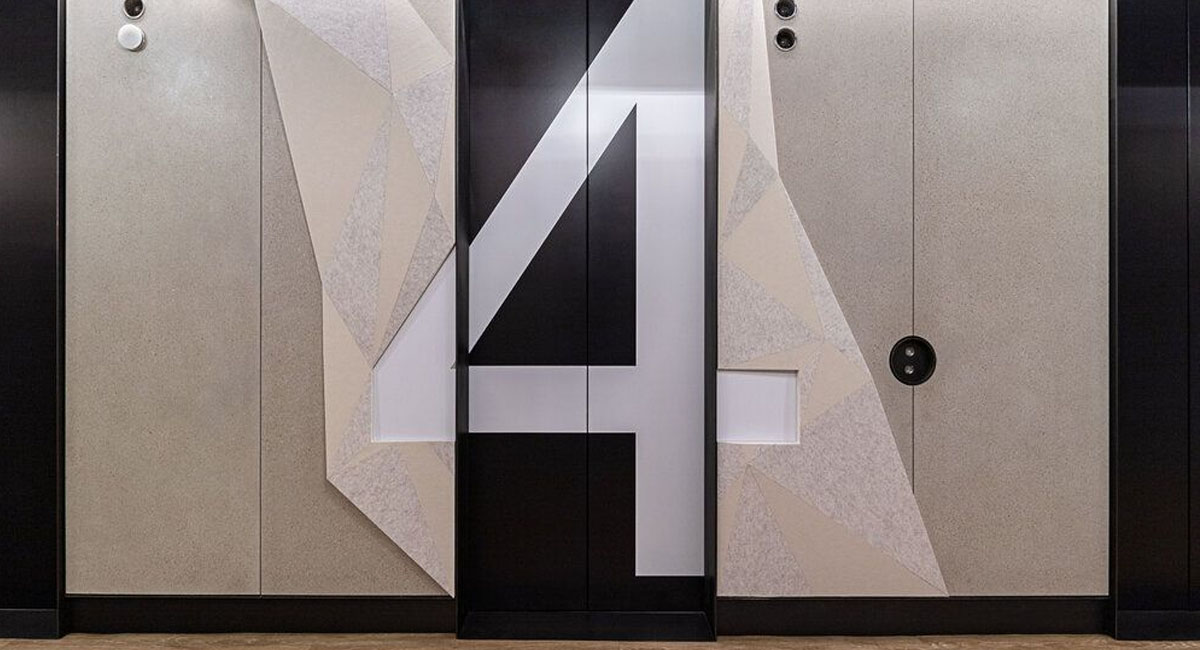
Photo: Komatsu Corporate HQ
Elevated Transitional Spaces
Elevator lobbies, reception areas, hallways, and corridors – commercial areas that were once strictly functional have become the spotlight for intentional, thoughtful interior design. Oversized graphics, custom wayfinding signage, innovative lighting, and the use of mixed materials and textures are just a few of the trends we are seeing to help elevate and differentiate these highly trafficked, but often overlooked areas. At Komatsu Corporate Headquarters in Chicago, each elevator lobby area was given a unique geometric felt design, softening an otherwise cold, mechanical space and making each floor unique.
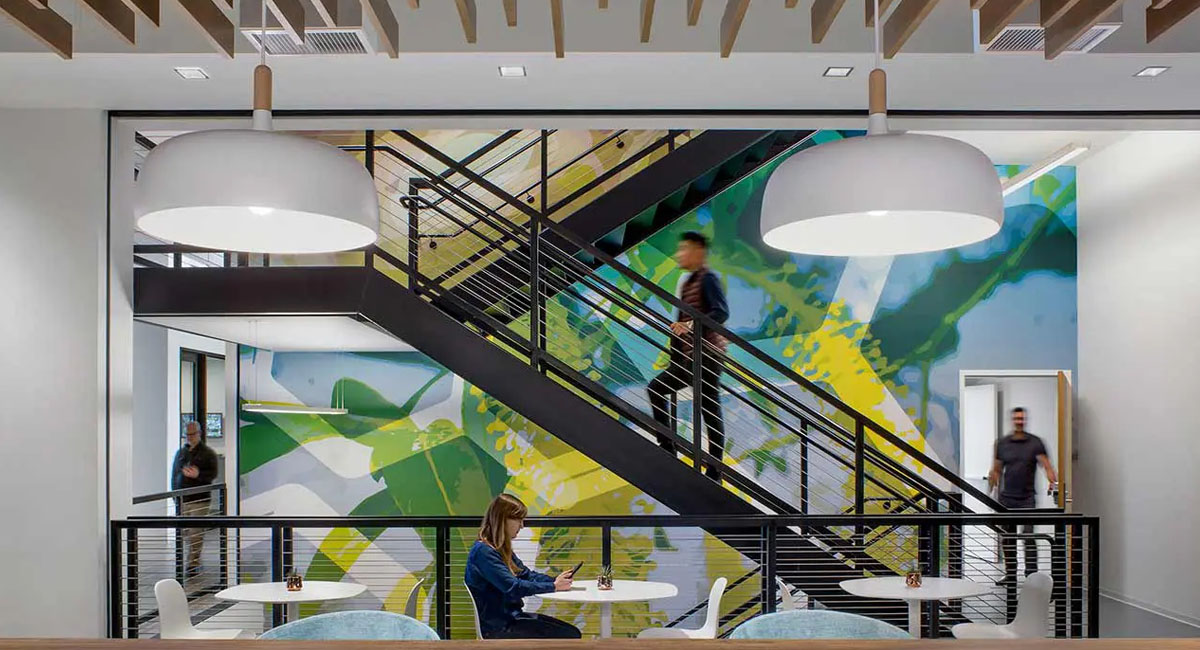
Photo: David Wakely, Astra-Zeneca
Sustainability
While not explicitly a new trend, sustainable design remains in high demand. Many brands in the health and wellness realm and other environmentally conscious companies look to reduce their carbon footprint and their electrical bills by opting for energy-efficient designs and technologies, renewable and sustainable materials, low-flow plumbing fixtures, and even solar panels. The challenge with truly sustainable construction and design, including LEED certifications and the like, is that it undoubtedly costs more upfront. For brands that have the resources and can play the long game of remaining in the same location for those investments to pay off, however, sustainability offers a tangible way to demonstrate their values and create unique, healthy commercial interiors.
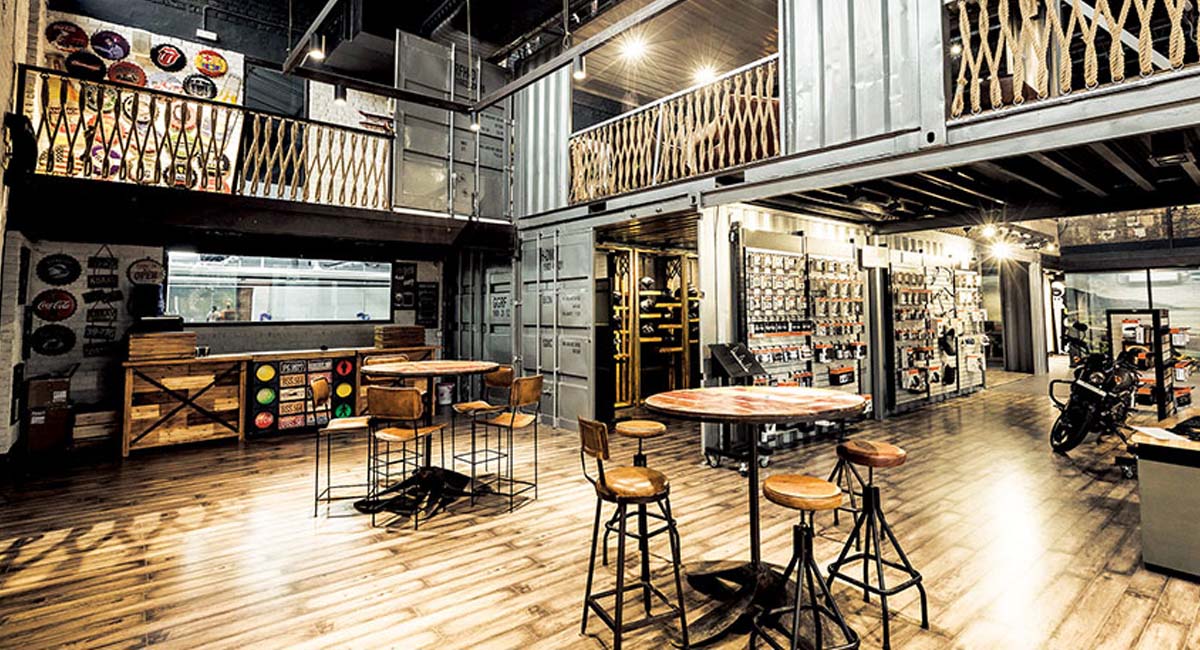
Example: Harley-Davidson Red Fort
Storytelling
Can a space tell a story? You bet. Take this Harley-Davidson outpost in Delhi, India. The brand took an old warehouse and retained much of the grit and industrial feel of the 13,000+ sf space while infusing it with vintage and classic Harley-Davidson paraphernalia. Shipping container walls evoke the rough and tumble character of the brand, while natural and raw materials tell the story of both the warehouse’s past and the brand’s ethos. More and more, commercial interiors are expected to do double duty like this – provide not only a functional space to conduct business but also convey a message and meaning to guests. In this example, the space tells the story of the brand and the building – it's a wholly unique experience.
These innovative, inspiring interiors are anything but boring. From energizing colors to imaginative approaches to retail store design – modern corporate interiors have moved beyond the tried and true to the awe-inspiring and extraordinary. The result? Dynamic spaces that get people off of their sofas and back into their communities, whether to work, to shop, or simply just to engage.
Recent history has taught brands that interior design matters. If you want to keep customers and employees happy, you must dare to differentiate your space from the competition and use it to convey your unique brand's story, values, or history. Thoughtful commercial interiors have become yet another route for companies to display their creativity and engage visitors in a more immersive way.
Looking for the perfect partner to tackle a new commercial interior project? Here at Bridgewater Studio, we help brands from myriad industries envision their spaces from environmental graphic design and custom architectural fabrication to full-blown commercial interior renovations. Discover how our full-service design, fabrication, and production team can help with any or every stage of your project by scheduling a no-obligation introduction to Bridgewater Studio today.
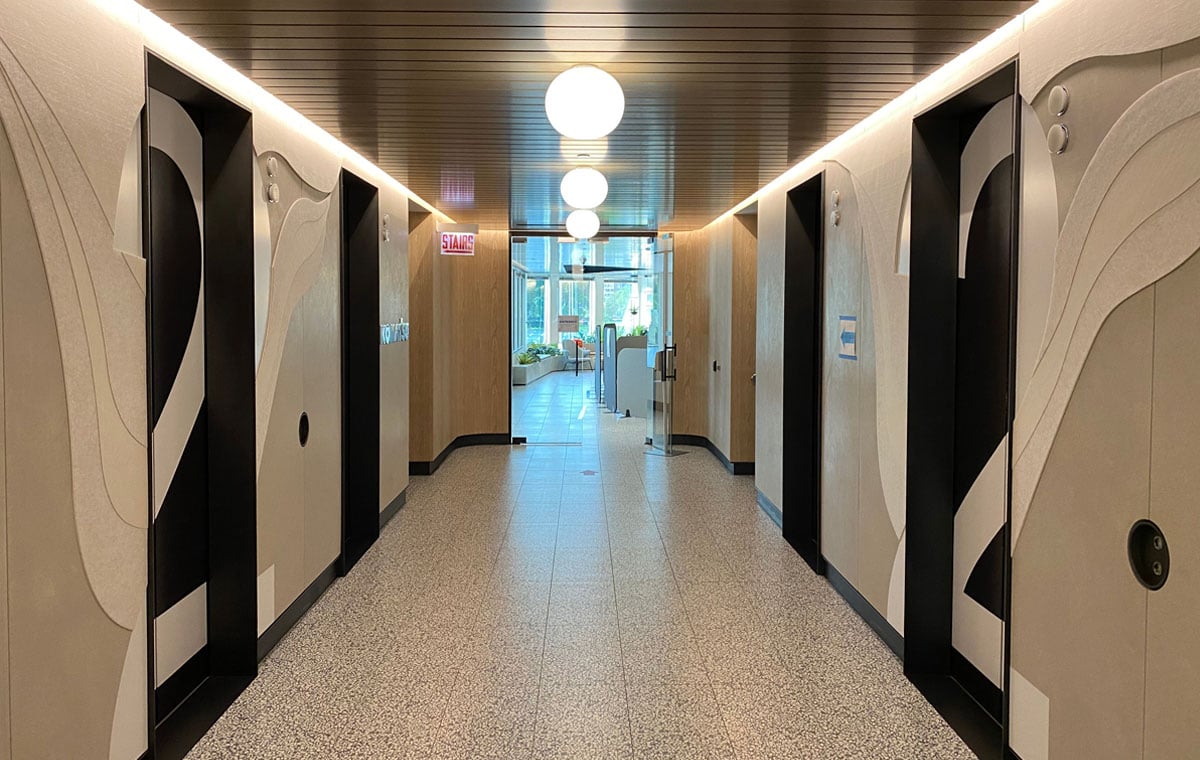

.png)
.png)
.png)







